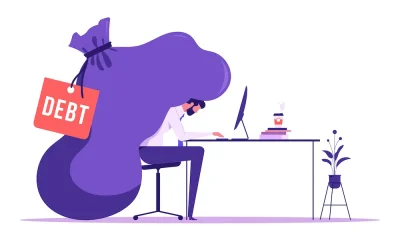Accounting & Finance
Bankruptcy – An Overview
Bankruptcy is the outcome of an individual or organization running out of funds, and being unable to make payments for products and services purchased.

Bankruptcy is the outcome of an individual or organization running out of funds, and being unable to make payments for products and services purchased. It is a “legally declared inability” to pay creditors and is often sought by creditors against a business or organization in an attempt to recover some or most of what is owed to them. Thus the debtor or the creditors can file for bankruptcy.
This leads to an evaluation of all the assets of the debtor and using them to repay all or part of his outstanding debts. The debtor then is allowed to start a fresh and his old debts are forgiven, but it affects his home, his credit rating, his business, and his life can never be the same since he will carry the stigma attached with bankruptcy for a long time.
Bankruptcy is permitted under the United States Constitution and every district of the country has special bankruptcy courts to resolve cases. An individual, a firm or a partnership can file for a bankruptcy in court, or less frequently, creditors can petition the court to declare the business bankrupt so that their assets can be used to settle creditor claims. The court then appoints a trustee, that is, an individual who is either an officer of the bankruptcy court called the Official Receiver, or an insolvency practitioner who is an authorized debt specialist. It is the job of the trustee to gather information about the debtor’s financial situation and protect his assets so that they may be used for paying off creditors.
Impact of bankruptcy on debtor
- Closure of the business due to lack of funds
- Dismissal of employees
- Loss of job for the debtor
- Debtor can no longer make direct payments
- Forfeit all assets
- Spare income from other sources used to settle creditor claims
- Loss of financial interest in home property
- Credit rating affected
- Difficult to raise funds since bankruptcy records are maintained for 6 years
Types of bankruptcy
The United States Bankruptcy Code lists four types of bankruptcy. The debtor has to decide on the type of bankruptcy he can file for, on the basis of ownership of the business, whether it is sole proprietorship or a partnership.
- Chapter 7 bankruptcy is a liquidation bankruptcy which most people file for. This stipulates that the appointed trustee will sell all the non-exempt assets of the debtor and use the funds received from the sale to settle the maximum number of debts. The debt that cannot be repaid is discharged. Chapter 7 bankruptcy is available for individuals and companies. Business cannot continue once bankruptcy has been filed and income generated after filing goes to the debtor and cannot be used to settle claims.
- Chapter 11 bankruptcy is filed by most businesses and is very complicated. The debtor continues his operations, retains ownership of all his assets but has to work out a reorganization plan for settling the dues of all his creditors. Previously, the business could take any amount of time to chart a reorganization plan, but with the implementation of the Bankruptcy Abuse Prevention and Consumer Protection Act 2005, a 120-day limit has been set to finalize the plan.
- Chapter 12 bankruptcy applies to farm owners who retain their assets and have to formulate a repayment plan to settle dues.
- Chapter 13 bankruptcy is similar to chapter 11 but applicable to individuals who retain their asset ownership and have to work out a 3-5 year repayment plan. Some limits are imposed on the debt involved and some debts are discharged.






